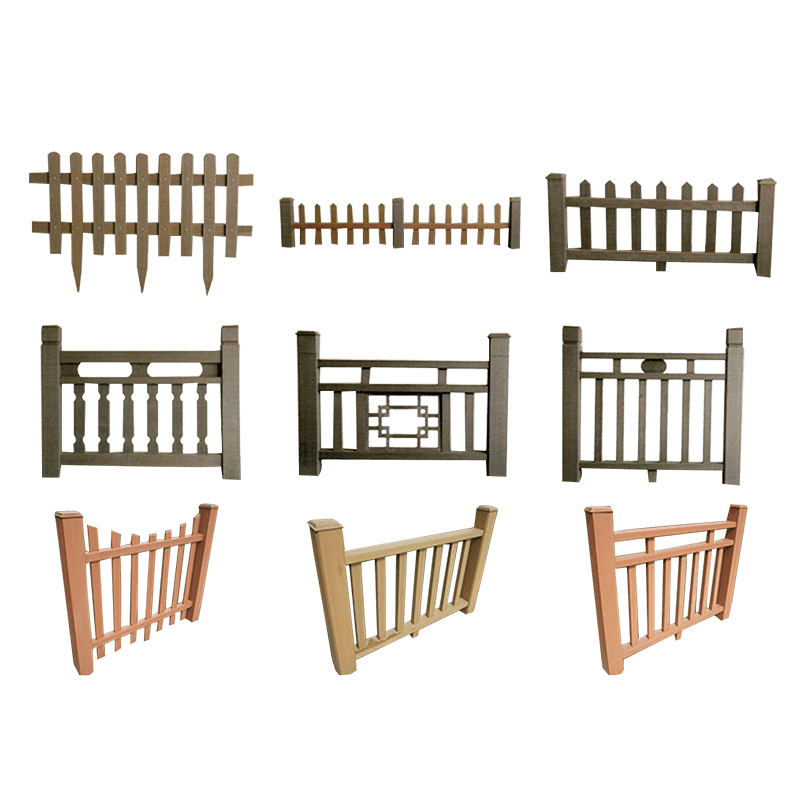Provide you with the latest enterprise and industry news.
The demand for eco-friendly and sustainable building materials has surged, driven by an increased awareness of environmental protection and the need for long-lasting construction solutions. Among these innovative materials, Wood-Plastic Composite (WPC) has emerged as a versatile and highly effective alternative to traditional wood and metal. One of the most prominent applications of WPC is in the construction of guardrails, where it combines aesthetic appeal, durability, and environmental benefits. This article delves into the advantages of WPC guardrails, their applications, and why they are becoming a preferred choice in modern infrastructure projects.
Wood-Plastic Composite (WPC) is a material made from a blend of natural wood fibers and thermoplastic polymers. This combination results in a product that retains the natural appearance of wood while offering the strength and durability of plastic. The process of creating WPC involves mixing wood fibers, usually sourced from recycled wood or sawdust, with plastic, often recycled as well, and then extruding the mixture into the desired shape. This process not only utilizes waste materials, reducing environmental impact, but also creates a product that is resistant to many of the issues that plague natural wood, such as rot, decay, and insect damage.

One of the most significant advantages of WPC guardrails is their durability. Unlike traditional wood, WPC does not warp, crack, or splinter, making it an ideal material for outdoor use where it is exposed to the elements. The plastic component of WPC makes it resistant to moisture, which is a common cause of degradation in natural wood. Additionally, WPC guardrails are resistant to insects, such as termites, that can cause significant damage to wooden structures.
WPC guardrails require minimal maintenance compared to traditional wood or metal alternatives. They do not need to be painted or stained regularly, as the color is inherent in the material. This not only saves time and money but also reduces the environmental impact associated with the use of paints and stains, which often contain harmful chemicals.
WPC is considered an environmentally friendly material for several reasons. First, it is made from recycled materials, including both wood and plastic, which reduces the need for virgin resources. This recycling process helps to minimize waste and reduce the amount of plastic that ends up in landfills or the environment.
WPC guardrails have a longer lifespan compared to traditional wood, which means they do not need to be replaced as frequently. This longevity further reduces the demand for raw materials and the environmental impact associated with manufacturing and transportation.
WPC guardrails offer a natural wood-like appearance, which can be customized in terms of color, texture, and design. This flexibility allows architects and designers to create structures that blend seamlessly with their surroundings, whether in urban environments or natural landscapes. The aesthetic versatility of WPC guardrails makes them suitable for a wide range of applications, from residential properties to public parks and commercial developments.
While the initial cost of WPC guardrails may be higher than that of traditional wood, the long-term savings are substantial. The low maintenance requirements and long lifespan of WPC mean that the overall cost of ownership is lower. Additionally, the durability of WPC reduces the need for repairs and replacements, which can be costly and time-consuming.
WPC guardrails are being used in a variety of applications across different sectors. In residential areas, they are often used for fencing, balconies, and decking, providing a safe and aesthetically pleasing barrier. In public spaces, such as parks, bridges, and boardwalks, WPC guardrails offer a durable solution that can withstand heavy use and harsh weather conditions.
In commercial developments, WPC guardrails are used to enhance the appearance of buildings while providing safety and security. Their ability to mimic the appearance of wood allows them to fit into both traditional and modern architectural styles.
The growing popularity of WPC guardrails is a testament to their many advantages over traditional materials. Their durability, low maintenance requirements, environmental benefits, and aesthetic appeal make them an ideal choice for modern infrastructure projects. As the demand for sustainable building materials continues to rise, WPC guardrails are set to play a crucial role in the future of construction, providing a safe, cost-effective, and environmentally friendly solution for a wide range of applications. Whether in residential, commercial, or public spaces, WPC guardrails offer a smart choice for those looking to build with both strength and sustainability in mind.



 English
English Español
Español














